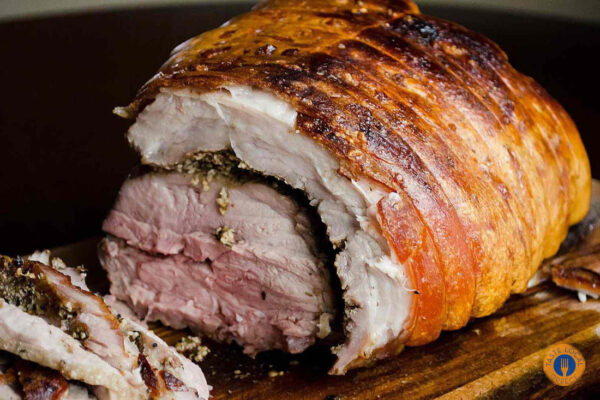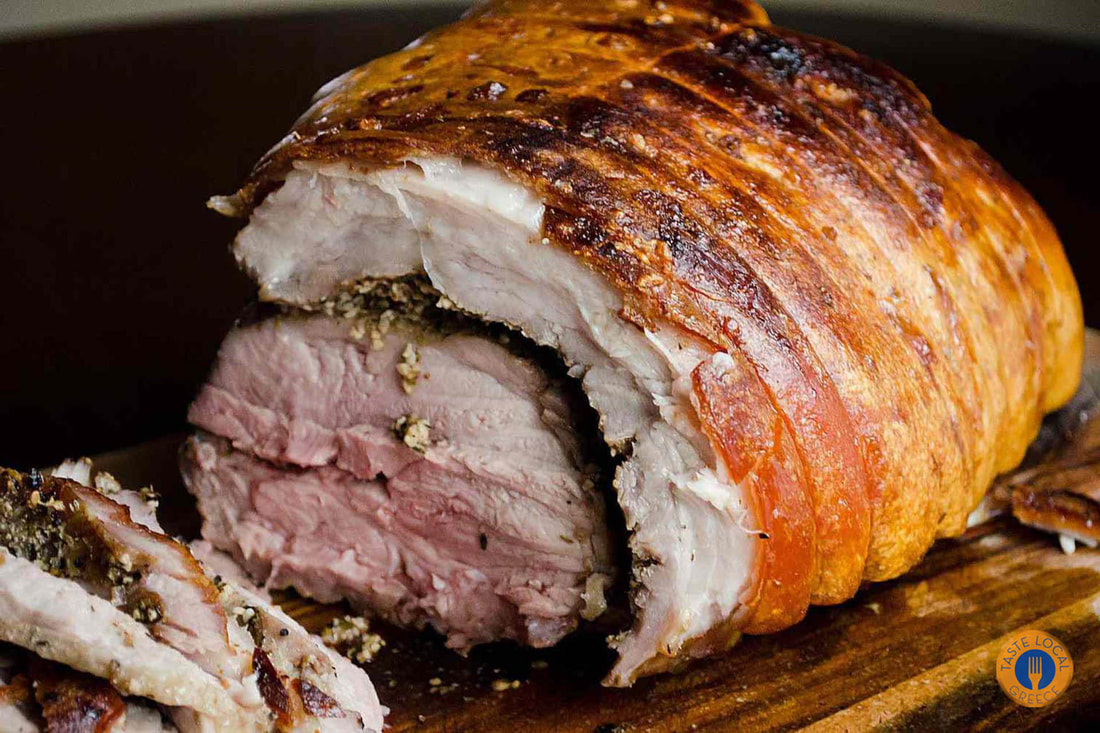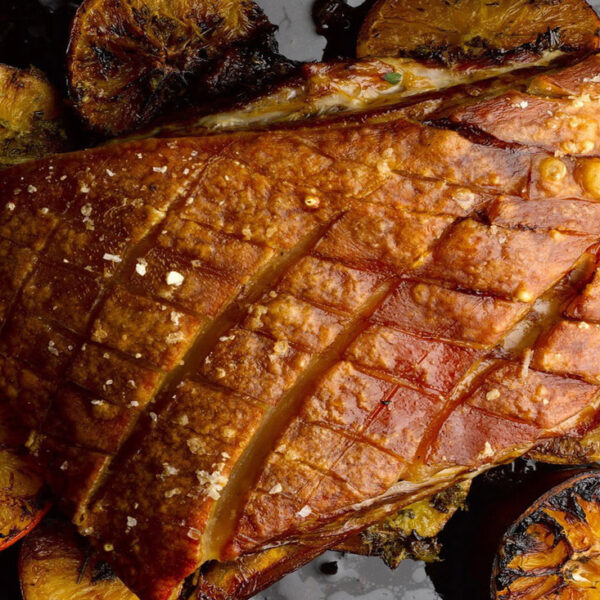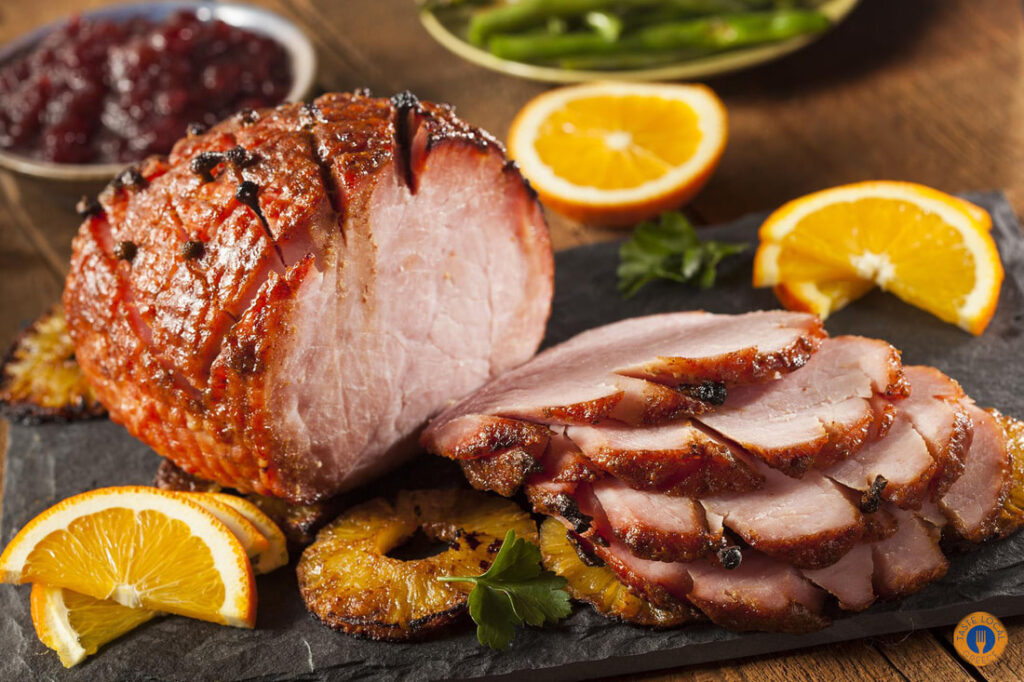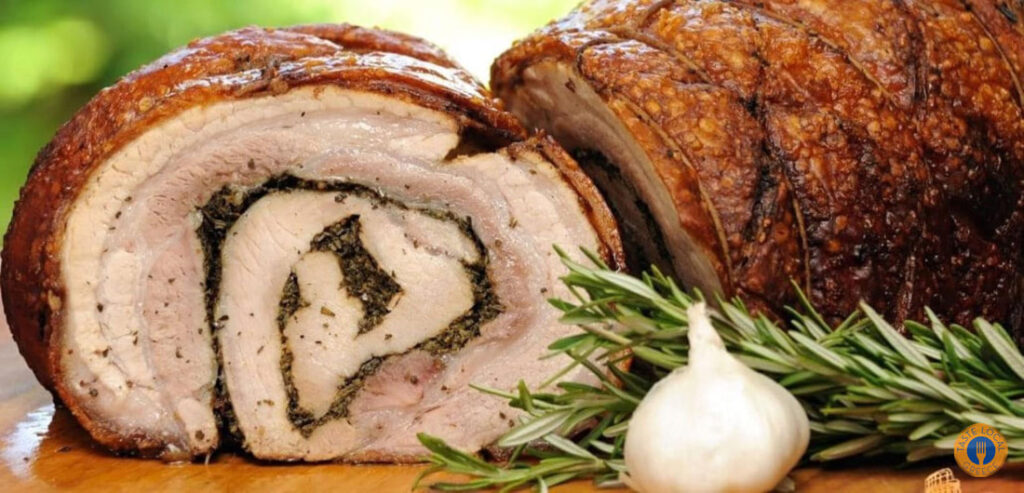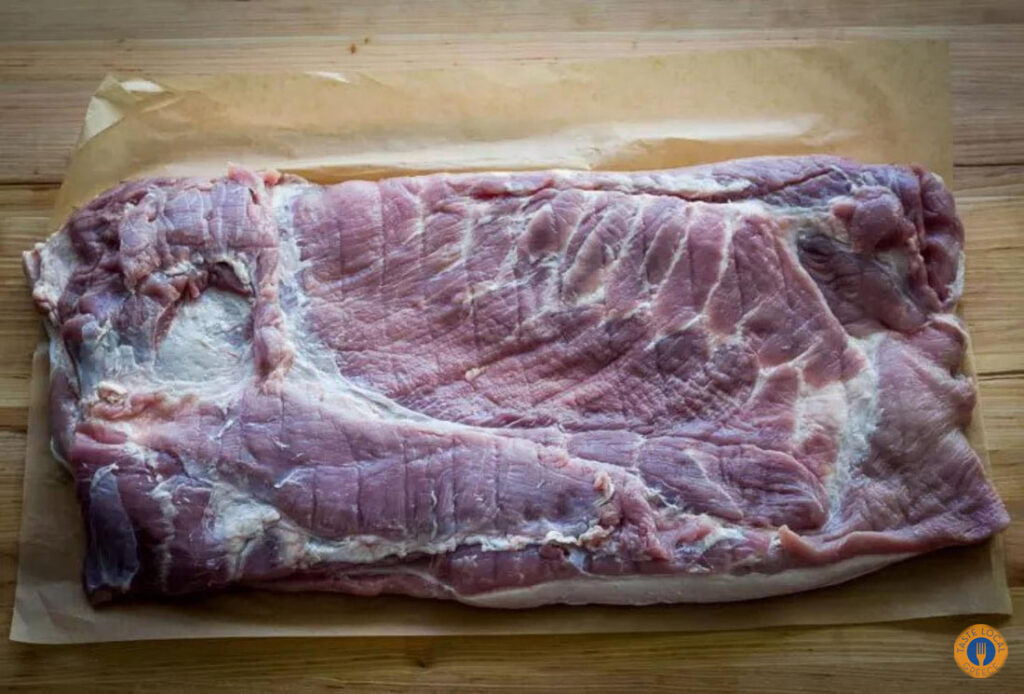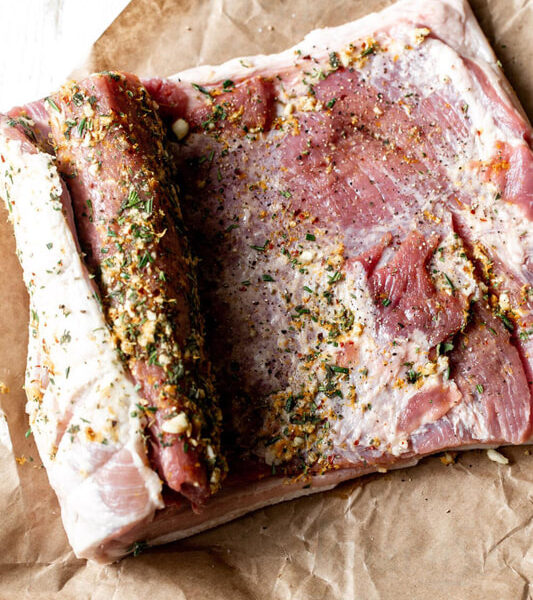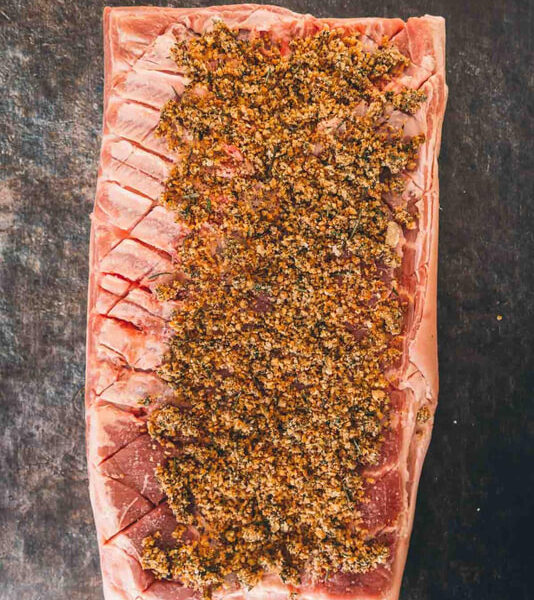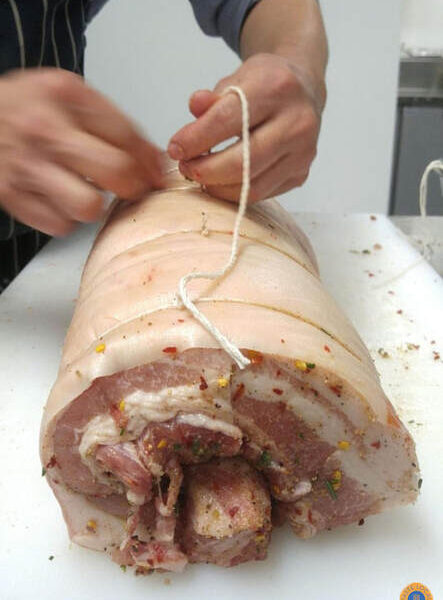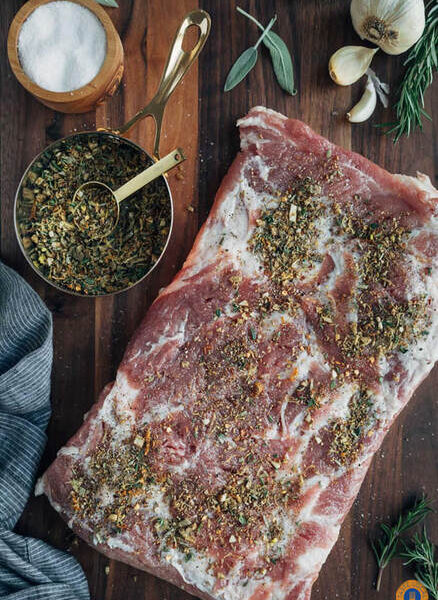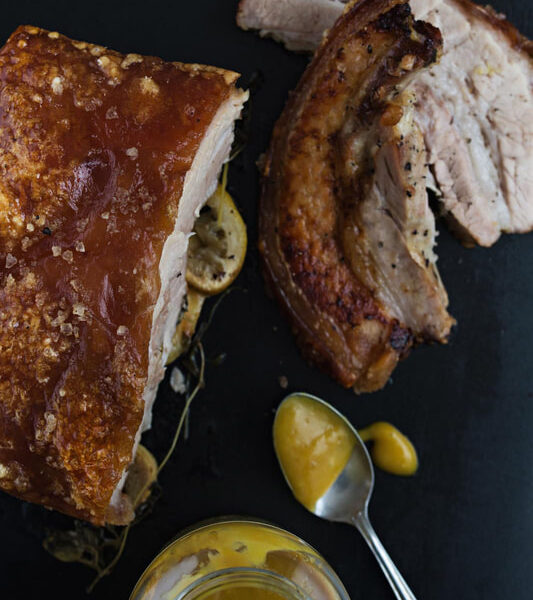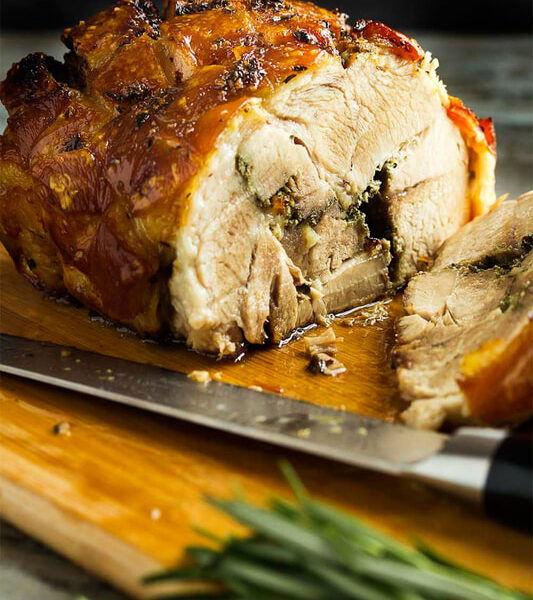Text and photos by Giorgio Grigor
Roast pork is the traditional Christmas dish of the Peloponnese and many other parts of Greece, before American traditions introduced turkeys and bland hams.
Every Christmas, there was a rivalry between Kyparissia and Trieste!
Grandma Mariouci, a true Italian, insisted on making classic Christmas Porchetta, while Grandma Olga from Kyparissia preferred the traditional oven-roast pork, usually shoulder or leg, with oranges, mustard, and honey…
Compromises were often made, like, “Okay, you make the porchetta for Christmas and I’ll make the pork for New Year’s…”
Thus, over the years, two classic recipes became staples at festive tables – one Italian, with a decadent chocolate mousse for dessert, or homey caramel cream, and the other strictly Peloponnesian, with traditional diples and perfect, melt-in-your-mouth milk pie, a specialty of Grandma Olga, though not entirely a Christmas dish, more of an Easter treat – but everyone asked for it…
The years passed, the grandmothers left for magical lands, but their recipes and flavors remained in our memories and in old recipe notebooks…
Later, my mother would sometimes make Porchetta, which my father, despite being from Kyparissia, adored, and other times, roast pork with potatoes, just for a change.
As time went on, turkeys took over traditions, and hams entered our lives more out of convenience than taste. Foreign influences began appearing at the table, calling for foie gras, game meats, and other fine dishes…
Then, my mother passed away, and her delicious memories remained in our minds and in the old, scribbled cookbooks.
I would often hear my father murmur when that large bird appeared on the table, searching for the traditional roast pork with caramelized potatoes alongside it…
I had learned both recipes and eventually combined them into one!
So here’s the classic Messinian roast pork with oranges, blended with an Italian stuffing where fennel seeds set the tone of “Avanti maestro,” and oranges and honey from the other side shout “aeeeerraaa!”
The combination worked beautifully, and after many years, I saw my father’s face light up when the pork platter arrived at the table!
He looked at me, and with a simple nod, thanked me for the wonderful gift!
Such happiness I hadn’t experienced in years…
Thus, the Italo-Messinian recipe became our Christmas table tradition!
Instead of fatty pancetta and dry leg, I chose the neck, which is more balanced. I stuffed it with Italian herbs and combined it with orange juice, honey, and mustard for a harmonious blend of both traditions!
The experiment worked, and since then, I’ve been making my “secret” recipe for roast pork for the family Christmas table. However, now the younger generation often requests it for Sunday family meals as well!
Over the years, I’ve made this dish, choosing different cuts of pork each time.
I started with the fatty pancetta, then moved to the leg, the shoulder, and finally, the neck, depending on who would be at the table…
The younger ones tend to favor pancetta, while the older ones prefer something “healthier,” such as the shoulder.
After all my tests, I’ve settled on the neck, which, while not as fatty as the pancetta, still has enough fat to keep the roast juicy!
Ingredients
- About 3 kg boneless pork neck
- 4 tbsp fresh thyme
- 4 tbsp fresh rosemary
- 4 tbsp fresh sage
- 1 tbsp chili flakes (boukovo)
- 2 tbsp crushed fennel seeds
- 1 large onion, finely chopped
- 4 fresh Italian sausages (salsiccia)
- 1 bunch fresh parsley
- 400 g soaked bread
- 20 g pine nuts
- 20 g sultanas
- 8-10 slices mortadella
- 200 g San Michalis cheese from Syros or Amfilochia pecorino
- Zest of 2 lemons
- Juice of 2 lemons
- Juice of 5 oranges
- 3 tbsp honey
- 3 tbsp mustard
- 200 g sweet wine
- 3 tbsp salt
- 1 tbsp coarsely ground black pepper
- 3 tbsp extra virgin olive oil
- 8 garlic cloves, crushed
- 6 carrots
- 6 stalks celery
Method
- Lay the pork neck on a cutting board. Carefully cut it to triple its length, being cautious not to slice all the way through. For ease, you can also cut it in half to create a large pocket.
- Lightly score the inside of the meat to help it absorb the seasoning.
- Sprinkle with salt and pepper, then massage the seasoning into the meat.
- Pour sweet wine over the pork, then add lemon zest and massage it in.
- Heat olive oil in a pan, add the onion, and sauté until it softens and becomes translucent.
- Add the sausage (after removing the casing and chopping it), herbs, pine nuts, garlic, and sultanas. Brown the mixture for a few more minutes, then deglaze with the remaining sweet wine.
- Remove from the heat and allow to cool.
- Squeeze out any excess water from the soaked bread and chop it finely.
- Add the bread to the cooled sausage mixture, along with the grated cheese (I used San Michalis) and mix everything well.
- Spread the stuffing over the pork, then layer the mortadella slices on top.
- Carefully roll the pork tightly, ensuring the stuffing doesn’t spill out.
- Tie the roast securely with kitchen twine at 6-7 points, wrap in plastic wrap, and refrigerate for at least an hour to set.
Cooking
- Preheat the oven to 250°C.
- Remove the pork from the fridge and unwrap it.
- Rub the roast with olive oil, salt, and pepper, then place it in a lightly greased baking tray over the carrots and celery.
- Mix the orange juice, lemon juice, honey, remaining sweet wine, and mustard, then pour over the pork.
- Cover the sides of the pork with aluminum foil to prevent burning, and cover the whole roast with parchment paper, then wrap in aluminum foil.
- Place the pork in the oven for 30 minutes at 250°C.
- After 30 minutes, reduce the temperature to 150°C and roast for an additional 3 hours.
- After three hours, remove the foil and paper, and continue roasting for another 30 minutes to allow the roast to develop a beautiful golden crust.
- Once the roast has a nice color, turn off the oven and let the pork rest in the warm oven until it reaches serving temperature.
- Carefully remove the roast, cut off the twine, and transfer it to a cutting board or, even better, the old family platter!
- Serve immediately, or let it cool and serve the next day – although I always prefer it warm.
- If there are leftovers (though I doubt it), store them in the fridge, wrapped in aluminum foil or in a large glass container, where it will last up to a week.
Finally, I’m sharing a video from my favorite Italian chef Gennaro Contaldo, where you can see step-by-step how to make Italian Christmas Porchetta, from which I drew inspiration for this recipe, with a few adjustments.
Grandma Mariouci made it almost the same way, but with sausage instead of minced meat. Enjoy!

